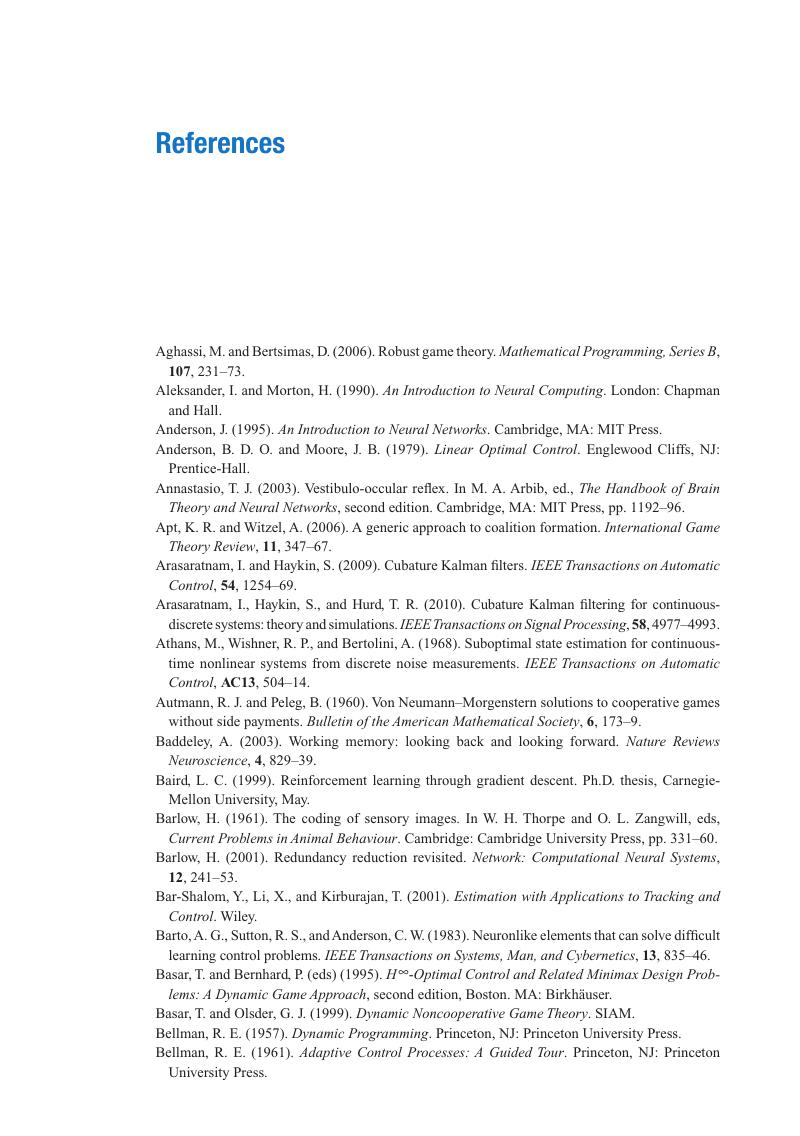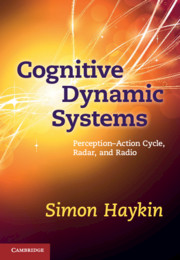Book contents
- Frontmatter
- Contents
- Preface
- Acknowledgments
- 1 Introduction
- 2 The perception–action cycle
- 3 Power-spectrum estimation for sensing the environment
- 4 Bayesian filtering for state estimation of the environment
- 5 Dynamic programming for action in the environment
- 6 Cognitive radar
- 7 Cognitive radio
- 8 Epilogue
- Glossary
- References
- Index
- References
References
Published online by Cambridge University Press: 05 June 2012
- Frontmatter
- Contents
- Preface
- Acknowledgments
- 1 Introduction
- 2 The perception–action cycle
- 3 Power-spectrum estimation for sensing the environment
- 4 Bayesian filtering for state estimation of the environment
- 5 Dynamic programming for action in the environment
- 6 Cognitive radar
- 7 Cognitive radio
- 8 Epilogue
- Glossary
- References
- Index
- References
Summary

- Type
- Chapter
- Information
- Cognitive Dynamic SystemsPerception-action Cycle, Radar and Radio, pp. 297 - 305Publisher: Cambridge University PressPrint publication year: 2012



